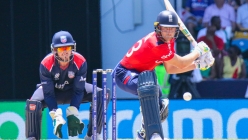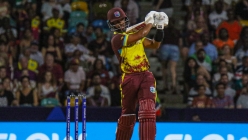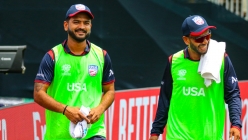Views
Captaincy by committee
2009 Mar 28 by Suresh Menon
By Suresh MenonCaptaincy by committee has never worked in cricket; all it has done is allowed the nominated captain to spread the blame when a decision has gone wrong. "It was a team decision," is cricket's biggest cop out. "I got it wrong," is not a confession that is often heard from a captain.
Captaincy by committee has never worked in cricket; all it has done is allowed the nominated captain to spread the blame when a decision has gone wrong. "It was a team decision," is cricket's biggest cop out. "I got it wrong," is not a confession that is often heard from a captain. Yet, whatever the gut feeling of the traditionalists, it might be unfair to judge John Buchanan's new multi-captain policy before we see how it works. There hasn't been a major strategic innovation in cricket for a long time, and things work differently in Twenty20 anyway. We cannot use the same yardstick in that format as we would in any other.
Having, say, four captains during a match seems odd. And gimmicky when you consider that the job description of one of them states "go out for the toss with the rival captain. Then come back and shut up for the rest of the game." Having so many captains during the course of a match might allow a coach to spread the blame and go scot free in case there is a major cock up.
For example, the recent England-West Indies one-dayer which England won because the West Indies coach John Dyson read Duckworth-Lewis wrong. Do you need an extra captain for the arithmetic, and if so, isn't the coach ducking responsibility?
Look at it from a player's point of view. If he is an all rounder, he turns to three different captains - the batting captain, the bowling captain, the fielding captain in the course of a match. This can be confusing and time-consuming, and that is why, even if there are other players providing inputs, all decisions are traditionally funneled through one captain.
Some years ago, the man who, before Buchanan, was considered the super coach, Bob Woolmer sought to go the other extreme, making the sole captain merely a figurehead to carry out the coach's instructions. He sent out the captain with an ear piece through which the coach's directives were relayed. Even that seems a better alternative to captaincy by committee.
What is worrying about Buchanan's theory is that it can look like a roundabout way of taking the job away from Kolkata Knight Riders captain Sourav Ganguly in the higher interests of 'strategy'. Ganguly's response - why not have four coaches instead - puts the debate in perspective. Of course, there is a superior coach above the super coach and this gentleman, Shah Rukh Khan, the team owner might have the final say. In either case, this will be Bollywood's contribution to cricket theory.
Perhaps this is a way of introducing an element of complexity into what is basically a simple format of the game. Twenty20 needs gimmicks, it needs to keep both spectators and players interested, and if a coach thinks that one way of doing this is by having half a dozen captains, then he is merely playing the game.
But if he is serious and believes he is contributing to the evolution of the game, he has to consider such things as co-ordination among captains, accountability, communication - and that, coincidentally, is part of the coach's job description. To put it another way, the batting captain, say, is either in agreement with the coach, in which case he is redundant, or he disagrees with the tactics, in which case he is a liability.
It may be argued that too much is made of the captain's role in cricket, as opposed to his role in other sports like soccer or tennis. In that case, having more of them cannot be a solution.




